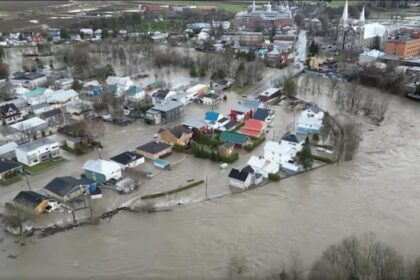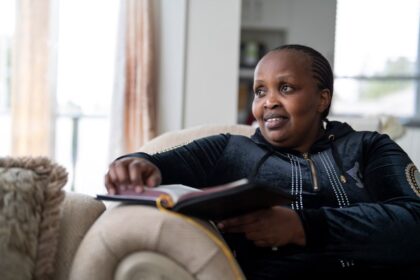PoliticsSome of what’s in this week’s federal budget were things the Liberals ran on in the spring election campaign. Did they live up to their promises?Some of what’s in the budget were things the Liberals ran on in the electionDavid Michael Lamb · CBC News · Posted: Nov 06, 2025 4:00 AM EST | Last Updated: 5 hours agoListen to this articleEstimated 5 minutesPrime Minister Mark Carney’s first budget touches on some of his campaign promises, but certain details are missing to know for sure if the Liberals will deliver on all of them. (Justin Tang/The Canadian Press)Political parties and their leaders don’t always have a stellar reputation for keeping their promises. This week’s budget offers an opportunity to check on some of the things Prime Minister Mark Carney and his Liberal Party promised during the election campaign in the spring. Did they become reality?We can’t be comprehensive. There are parts of the budget that didn’t start with specific campaign promises, and there were campaign promises that don’t have budget implications.But some things can be checked, and they include some of the biggest priorities of Carney’s government.The tariff fightAfter U.S. President Donald Trump imposed 25 per cent tariffs on Canadian-made vehicles on April 3, Carney announced retaliatory tariffs aimed specifically at the auto industry (by this time he was already prime minister, but the campaign was also underway). He promised that “every single dollar raised from these tariffs will go directly to support our autoworkers.”It appears the government has not yet lived up to the letter of that promise, although it left itself wiggle room in the budget. It’s also complicated to measure because other retaliatory tariffs have been imposed, and help has been given to workers in other affected industries, such as in steel and aluminum.In all, Canada has brought in $6.7 billion from counter-tariffs since Trump was elected.Of that, $3 billion has been given back to companies and workers hit hardest by the trade war. That leaves $3.7 billion left over, so “every single dollar” hasn’t been handed out, but Ottawa says it may still give out more as the U.S. tariffs continue to bite.Defence commitments to NATOUnder intense pressure from Trump, the Liberals agreed during the campaign to increase Canada’s defence spending to two per cent of GDP by 2030, a key amount that all NATO countries have pledged to meet. Canada, however, has not lived up to that commitment.After winning the election, Carney agreed to increase the NATO commitment further (once again, under pressure from Trump) to five per cent of GDP (which includes 1.5 per cent for support infrastructure).In the budget, Finance Minister François-Philippe Champagne said Canada will meet the two per cent target this year, faster than the initial promise. Beyond that though, the budget’s numbers aren’t specific enough to figure out if the government is living up to its commitments. The defence section doesn’t offer a year-by-year breakdown of spending, and no comparison to GDP is offered for the coming years.Doubling homes built per yearDuring the spring, Carney’s Liberal Party said it would get 500,000 homes built per year, doubling the current rate. It would do this by creating a new agency called Build Canada Homes, which would spend $10 billion on building affordable new homes, and loaning another $25 billion to developers.The government created Build Canada Homes in September, and in this week’s budget it dedicated $13 billion over five years to fund it, characterizing that as an “initial” investment.But the government has scaled back its promise slightly. The budget says homebuilding will now “nearly” double, to between 430,000 and 480,000 homes per year.Spending on AIArtificial intelligence has been called one of the biggest technological innovations in human history, and is being fuelled by staggering levels of investment from both private companies and national governments.But the budget doesn’t match what the Liberals promised to invest on the campaign trail.Back then, Carney promised $2.5 billion invested in digital infrastructure like chips and data centres through the next two fiscal years, as well as $15,000 for workers in priority sectors to learn how to use AI.However, the budget only pledges $925 million over five years for public AI infrastructure, $800 million of which is money already announced in last year’s budget.Otherwise, the federal government says it will try to attract private capital for AI investment but the details are vague.WATCH | Canada starting from ‘advanced position’ in AI, says Solomon:AI minister denies that Canada needs to ‘catch up’ with global industryMinister of Artificial Intelligence Evan Solomon explains how his new expert panel’s ’30-day sprint’ toward an updated AI strategy hopes to keep companies and jobs in Canada despite hundreds of billions of dollars in investments from China and Silicon Valley. Solomon argues Canada is ‘starting from an incredibly advanced position’ in the industry, but also says the country has ‘an adoption problem’ with AI. CBC fundingOne of the surprising details in the budget was the announcement that the government is “working with CBC/Radio Canada to explore participation in Eurovision.” That wasn’t a specific campaign promise, but in the spring the Liberals did pledge an immediate $150 million in new funding for the CBC. It also said it would insist on better governance and accountability from the corporation, in return for more stable overall funding.Aside from Eurovision, the government did include that $150 million in the budget, and made a vague nod to the campaign promise by saying it would explore the idea of strengthening CBC’s independence.ABOUT THE AUTHORDavid Michael Lamb is a senior producer with CBC News in Toronto.
Lets see how the federal budget compares to Liberal promises











